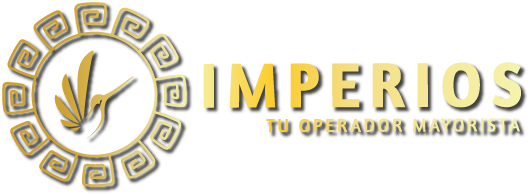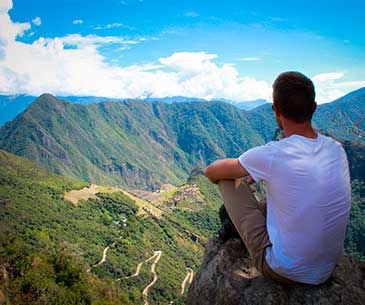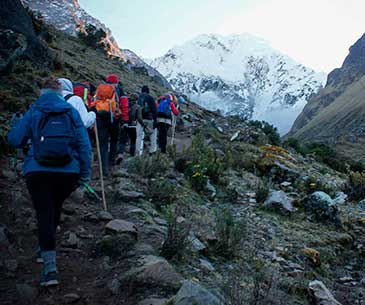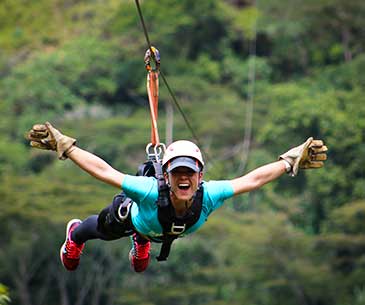CHINCHERO
It is a district in the Urubamba province, 30 Kms. (19 miles) away through the paved road, northwest from Qosqo. Its altitude is 3780 mts. (12400 feet), over a plateau that is cold during the early mornings and at night time. It was one of the most important Inkan towns in the region, where even today it is possible to see vestiges of its great past. The meaning of its original name is lost; although, today tradition knows it as the "land of the rainbow" because over here the K'uychi (rainbow) is frequently seen in the rainy season. As it is known the rainbow was a special deity among Inkas; it had a temple inside the Qosqo's Qorikancha, and still today in many regions of the Andes people respect, fear or even revere it. Alfonsina Barrionuevo, about the behavior of people in front of a rainbow says, "... It is not possible to watch the rainbow, they say superstitiously, without covering the mouth because it rots the teeth. Neither it is possible to point it with the finger because it undermines the bones. Maidens run away from it because if it catches them in the countryside, it has children with them".
Lamentably, as in most of the towns or temples near Qosqo, Chinchero was wrecked and modified by the "idolatries extirpators". Its destruction began when Manko Inka after his campaign in Qosqo decided to discharge his soldiers so that they could go back to their farmlands and take care of their families; he went towards Ollantaytambo passing through Chinchero and burning it so that the invaders who were persecuting him could not have either food or lodging. Subsequently in 1572, Viceroy Toledo founded the "Doctrine of Our Lady of Monserrat of Chinchero" and ordered construction of the present-day Catholic Church that was finished by the first years of the XVII century; possibly in 1607, that is the year found in the writing over the main arch inside the church. The whole church was built using as foundations the finely carved limestones that belonged to a great Inkan palace. The entrails of the fine Inkan building were filled up as high as the roofs with earth brought from some other sectors. It was in the 1960s when the Inkan palace was discovered under the Catholic Church. The Inkan palace must have been very important because on its facade facing to the southern plain presents openings of triple jamb that by themselves indicate its category. Farther south from the plain there are two "wakas" (shrines) carved on outcrop limestone formations; today they are known as "Chinkana" and "Titiqaqa". Towards the west there is another shrine named as "Pumaqaqa" where it is possible to observe on the in-situ rock sculptures of two pumas which heads were mutilated. Farther west from the mentioned plain there are, even more, a large amount of farming terraces that are still cultivated in spite of having lost their aqueducts.
On the southeastern side of the church is another great plaza that today is the town's Main Plaza. On its western side there is a wall containing big trapezoidal niches that can easily let a person stand up inside; they must have been used to keep the nobility mummies and idols that presided over ancestral ceremonies. That wall with niches has a genuine carved andesite cornice. By the middle of this plaza is a bust honoring Mateo García Pumakawa Chiwant'ito who was born in the house located in front of the bust; the house has small arch windows on the second floor. Mateo Pumakawa was Chinchero's Quechua chief, Official and Warrant Officer paid by the Spanish army; he fought against the Tupaq Amaru II Revolution helping to bring about his defeat in 1781. When being old aged he wanted to repay what he did against his people and race and joined the Angulo brothers in order to fight against the Spanish crown. But, he was defeated and hung from an arch like the ones that are seen in Chinchero, in Sicuani in 1814.
After the Tupaq Amaru defeat, Pumakawa made paint his victory in frescos over the church's gate: by the middle is the Monserrat Virgin, to her right is the victory celebration that coincides with the Thanksgiving procession and the presence of Saint Paul, and Saint Peter holding in his hand the heaven's keys. Toward the left side of the Virgin is the battle representing chaos and Tupaq Amaru's faction. More over, there are images representing Pumakawa symbolized in form of fighting victorious Pumas; and other images representing Tupaq Amaru symbolized by the "amaru" (serpent-dragon) as chaos and squalor representation. Inside the church there is a canvas representing the same dark-skinned Monserrat Virgin, where it is possible to see angels sawing the mountain; that artwork was painted by Quechua Cusquenian School artist Francisco Chiwant'ito and dated in 1693. Juan Carlos Estenssoro wrote about that canvas: " This Virgin, although, Spanish typically, is related with some others of the purely Andean imagery such as the Virgin of Galleries, in which Virgin and mountain are confused".
In Chinchero, every Sunday morning there is a nice native market, which is one of the most typical and commendable ones in the region. Over here it is still possible to observe bartering of goods, and almost always people exchange tropical goods such as fruits, coca leaves or salt for some other regional goods such as potatoes, broad beans, ollucos, etc. Also over here, there is a market for tourists with diverse handicrafts with very well made weavings standing out. Unlike some other markets where merchants are foreigners, over here merchants are native regional people.
Traveler Reviews
Certifications

Demonstrating our commitment to quality, we hold ISO 9001:2015 certification, ensuring excellence in our services.

With ISO 14001, we prioritize environmental sustainability, reducing our impact on the planet.

We're honored to be recognized with the Traveler's Choice Award in 2023, a testament to our dedication to exceptional travel experiences.

We are an official agency and tour operator, ensuring a unique and high-quality travel experience to the destinations of your choice in Cusco and Peru.
Recommended by







Travel Associations










